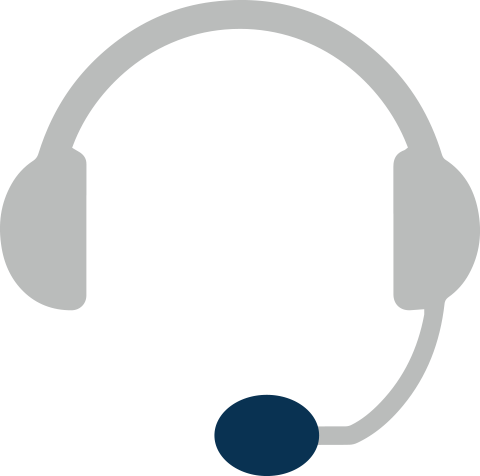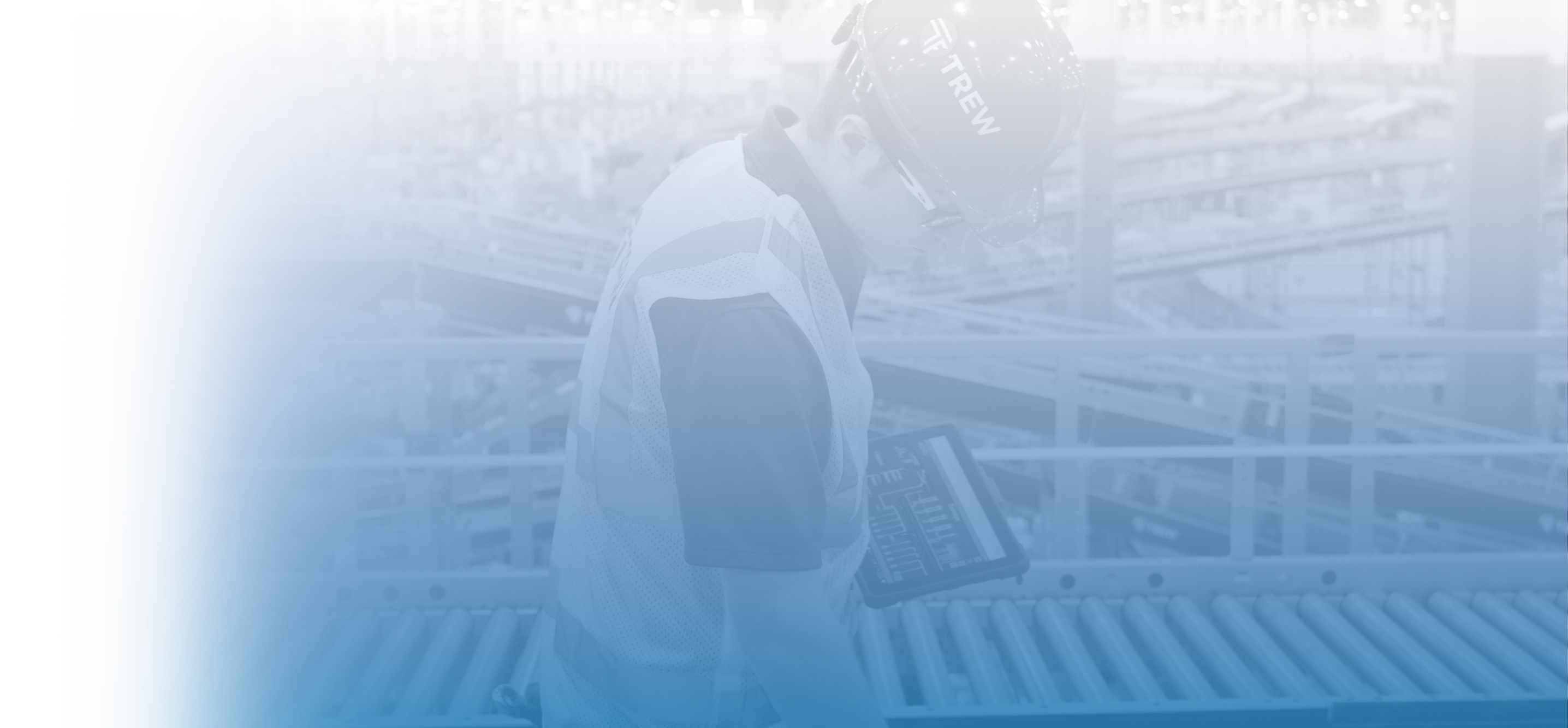Accumulation: Why it Matters

In today’s warehouses, automation is no longer a differentiator - it’s a requirement. Yet the performance of advanced robotics, AMRs, shuttle systems, and high-speed sortation is not solely determined by speed alone. Rather, performance depends on whether automation can function continuously at a sustained rate and flow without systemic interruptions or human intervention.
Accumulation = Operational Shock Absorber
Maintaining flow in omnichannel fulfillment is harder than ever. Operators work at different speeds, machines encounter delays, and ecommerce surges push inbound and outbound volumes unpredictably.
Accumulation conveyors absorb variability, regulate release, and prevent upstream and downstream volume mismatches from creating bottlenecks. They are the operational shock absorbers of automated distribution and fulfillment.
Automation's Connective Tissue
Even the most sophisticated system flow is brittle without a buffer. Accurately sized and applied accumulation conveyor can stabilize throughput rate, decouple human/machine work processes, and integrate automated point solutions together into a resilient system.
Accumulation is a disciplined approach to flow management that requires design expertise, operational insight, and maintenance foresight. To help warehouse leaders understand the importance of accumulation conveyors, we will explore:
Technical Anatomy
Accumulation conveyors come in several varieties, each designed to balance cost, precision, and product handling requirements. Conveyor accumulation systems are designed to temporarily hold or "accumulate" products on a conveyor line until downstream processes are ready to receive them. There are several types of accumulation conveyors, each suited to different operational needs.
Types
Zero Contact Accumulation Conveyors (aka Motor-Driven Roller)
What: The most advanced and flexible type, ensuring no contact between items at all.
How it Works: Uses motor-driven rollers (MDR) and sensors to stop items instantly before they touch others.
Best For: Highly sensitive products or flexible packaging like polybags.
Zero Pressure Accumulation Conveyors (aka Narrow Belt Accumulation)
What: Highest throughput type where the system prevents products from impacting each other with force during accumulation. More advanced versions allow for high density slugs or trains of accumulated products.
How it Works: Zones are controlled by sensors and actuators. When a product enters a zone, the drive mechanism disengages, allowing the item to coast to a stop without negatively impacting the item ahead.
Best For: Cases and totes with fragile or sensitive items that could be damaged by contact.
Minimum Pressure (or Medium Pressure) Accumulation Conveyors (aka Line Shaft)
What: Products accumulate with slight contact, using a continuously running drive belt that applies light pressure at lower speeds.
How it Works: The drive belt keeps rollers moving, but the pressure is low enough to minimize damage.
Best For: Durable items that can tolerate light contact.
Contact Accumulation Conveyors (aka Basic Roller, Chain, or Modular Plastic)
What: Products accumulate with direct contact and no pressure control.
How it Works: Items simply queue up and touch each other as they accumulate.
Best For: Non-fragile items where damage from contact is not a concern.
Technology Comparison
| Feature/Benefit | Contact Accumulation | Minimum Pressure Accumulation | Zero Pressure Accumulation | Zero Contact Accumulation |
| Types | Basic Roller, Chain, or Modular Plastic | Line Shaft | Narrow Belt | Motor-Driven Roller |
| Load Capacity | Very High (heavy cartons, pallets) | Low–Moderate (uniform cartons only) | Low–Moderate (cartons/totes <100 lbs) | Moderate (light–medium cartons) |
| Product Type Fit | Heavy, Rugged, Uniform | Uniform, Durable Cartons | Mixed Cartons, Totes, Consumer Goods | Fragile, Irregular, Polybags |
| Accumulation Style | Minimum Pressure | Minimum Pressure Only | Zero or Minimum Pressure | Precise Zero Pressure, Carton-by-Carton |
| Energy Efficiency | Low (continuous drive) | Low (continuous shaft drive) | Medium | High (runs only on demand) |
| Noise Level | Higher (chain rattle) | Medium–High (band noise, vibration) | Low-Medium | Very Low |
| Durability in Harsh Environments | Excellent | Moderate (bands wear quickly) | Moderate (sensitive to debris) | Fair (electronics sensitive to dust/heat) |
| Integration with Automation | Limited | Limited | Moderate | Excellent (WCS, robotics, advanced logic) |
| Maintenance Profile | Chains, Lubrication, Wear Points | Bands Stretch, Frequent Replacement | Belt Tensioning, Tracking | Sensors, Rollers, Control Boards |
| Cost (Initial vs Lifecycle) | Low Initial, Higher Maintenance | Very Low Initial, Moderate Lifecycle Cost | Moderate | Higher Initial, Lower Lifecycle OpEx |
Swipe for more →
Key Features
-
Product Density: The total linear footage of product over the length of accumulation conveyor. The less pressure, the larger the gap between cartons.
-
Back Pressure: The amount of pressure pushing cartons/totes on accumulation conveyor can cause damage, misalignment, jams, and the tenting and even spilling of totes.
-
Edge Alignment: The ability to skew cartons to one side while preventing carton drift, spinouts and side-by-sides.
-
Photo Eye Placement: Accumulating totes requires a skewed photo-eye alignment to prevent the photo eye from peering between the totes.
-
Pneumatics: Systems that need air pressure to actuate conveyor requires considerations for air compressors, piping, installation, etc.
Fun Fact
Line Shaft conveyors trace back to the Industrial Revolution. If your warehouse still runs on them, it might be time to fire up a steam engine out back.
Design Trade-offs & Their Operational Consequences
The value of accumulation is only realized when it is sized accurately and controlled with intent. Key trade-offs include:
-
Zone Length and Density: Shorter zones increase control precision but require more drives, sensors, and maintenance. Longer zones reduce component count but release product in less flexible slugs.
-
Product Geometry: Cartons with consistent footprints behave predictably on rollers. Polybags and irregular items often require belts, special transfers, or tighter sensor calibration.
-
Energy Efficiency: MDR conveyors that run only when occupied can reduce idle energy use significantly compared to continuously running belt conveyors.
-
Control Logic: Release rules such as sequential, slug release, singulation, or priority-based must align with order profiles and downstream equipment needs. A mismatch will result in either underutilized automation or downstream overload.
Where Accumulation Delivers Value
High Speed Merges
NBA efficiently feeds high speed merges, while MDR is best suited for mid-rate merges. These subsystems adjust to the amount of accumulated product, while smooth transportation eliminates side-by-sides. With real-time product recognition there is no "assumed" timing for merge control.
Infeed to Packing & Other Workstations
Operators working at variable speeds cannot keep pace with continuous sorter discharge. And the mix going across the sorter introduces ebb and flow across packing stations that are unique such as multis vs singles, auto-bagging vs cartons, and VAS. Accumulation buffers cartons, allowing each packer to work at a natural rhythm without throttling upstream sortation.
Upstream of Palletizers and ASRS
Palletizers and the inbounds to ASRS systems require steady inflow. Accumulation smooths irregularities and sequences cartons correctly, preserving uptime and avoiding jams.
Print-and-Apply Labeling Systems
Label applicators depend on consistent flow and gapping. Accumulation conveyors feeding gapping belts buffer the volume and enable the gapping belt to singulate and meter cartons to maintain rate and label applicator utilization.
Receiving Buffers
Inbound trailers unload in surges. Accumulation absorbs these bursts, protecting AS/RS or shuttle systems that cannot ingest cartons at dock-speed volumes.
Manufacturing End-of-Line Processes
End-of-line processes like quality checks and testing often run at different speeds, creating bottlenecks. Accumulation conveyors buffer these variations, keeping product moving steadily between stations.
Shipping Lanes
Before outbound loading, accumulation conveyors hold cartons until dock doors or trailers are ready. This decouples yard and dock activity from the sorter’s cadence. They also help sustain loading pace by decoupling the discharge rate and variability off the sorter from the loading rate.
Challenges in Warehousing that Accumulation Solves
-
Mismatch in Process Speeds: Picking, packing, and labeling all run at different cadences. Accumulation reconciles these mismatches without constant line stoppages.
-
Variability: Workers and processes inevitably vary in pace. Buffers absorb these variations and fluctuations so automation continues uninterrupted.
-
Protecting Product: Appropriately controlled accumulation prevents damage from surges and a mix of heavy and light products.
-
Graceful Exception Handling: Machine delays, jam clearances, or operator interventions are unavoidable. Accumulation allows upstream to continue running during short interruptions.
-
Error Reduction: By reducing relentless inflow, accumulation relieves pressure on workers, allows them to focus on tasks rather than constantly addressing overflowing infeeds that spill out onto the floor, thus lowering potential operator mistakes.
-
Peak Demand Absorption: During holiday surges or promotions, accumulation builds WIP and absorbs volume spikes.
-
Dock Decoupling: Loading and unloading are inherently bursty. Accumulation in solutions such as cross docking prevents dock activity from destabilizing the entire facility.
Lifecycle Considerations
Many accumulation systems still in use today were designed and installed decades ago. Older conveyor systems are prone to jams, crushed cases, and high maintenance costs. Their inability to adapt to modern variable flow rates makes them a growing liability.
In addition to the maintenance strategies listed above, operations leaders may consider phased replacements of aging accumulation conveyor starting with critical areas like merges or palletizer feeds - allowing teams to minimize disruption while still moving forward.
Conclusion: When Flow Matters Most
Accumulation conveyors are the unseen foundation of resilient warehouse automation. They solve challenges that leaders face every day such as process mismatches, human variability, peak surges, and exception handling. Their function is not simply to “hold boxes” but to ensure that automation investments deliver on their promise of throughput, quality, and labor efficiency.
Warehouse leaders who treat accumulation as a strategic asset through design rigor, operational alignment, and maintenance excellence will have automation systems that are far more efficient and resilient. While the automation equipment gets the headlines, the unseen accumulation conveyor helps make sure it works to its potential.
Finding The Right Solution
Trew Narrow Belt Accumulation Conveyor (NBA)
The Trew NBA is a pneumatically actuated, zone-based conveyor designed for low-pressure carton accumulation. Its dual-zone control card makes it easy to configure singulation or slug release modes to fit operational needs. For straightforward product movement without controlled release, Trew also offers a narrow belt transportation conveyor.
The NBA stands out with flexible skew options - any zone can be skewed, or full-length skew drives can be applied across the conveyor. Simple dual-zone controls deliver a high level of customization in a streamlined package, while the design ensures easy service and maintenance.
| Attributes | Narrow Belt Accumulation Conveyor |
| Rate | 60 CPM |
| Max Accumulation Speed | 180 FPM |
| Max Transportation Speed | 600 FPM |
| Payload - Accumulation | 50 lbs./ft. |
| Payload - Transportation | 75 lbs./ft. |
| Minimum Product Size | 6in. x 4in. x 7.5in. |
| Roller Finish Options | Coated, Uncoated |
| Skew Availability | Charge End, Intermediate Zones |
| Brake Availability | Discharge End, Intermediate Zones |
| Buffer Integration Compatibility | High-Speed Sortation Systems, Picking and Packing Operations, ASRS, Midrate Sortation, Outbound Shipping Operations |
Trew Motor Driven Roller Conveyor (MDR)
Trew’s Motor Driven Roller (MDR) conveyor is a versatile, 24V modular system designed for quiet, energy-efficient, zero-contact accumulation. Unlike traditional conveyors, MDR runs on demand, conserving power while reducing noise in the facility.
Its modular design includes curves, merges, inclines, declines, transfers, and even accumulating spirals, allowing engineers to create layouts tailored to the operation’s unique needs. MDR excels in areas where gentle handling, ergonomic interactions, or robotic integrations are required, delivering reliable performance while minimizing product damage and maintenance overhead.
| Attributes | Narrow Belt Accumulation Conveyor |
| Rate | 60 CPM |
| Max Speed | 180 FPM |
| Payload - Accumulation | 75 lbs./ft. |
| Payload - Transportation | 75 lbs./ft. |
| Minimum Product Size | 8 in. x 8 in. x 2 in |
| Roller Finish Options | Coated, Uncoated |
| Buffer Integration Compatibility | Packing & Picking Operations, ASRS, Midrate Sortation, Robotics Zones, Ergonomic Workstations, Outbound Shipping |
When to Use NBA vs. MDR
While MDR shines in flexibility and gentle handling, Trew’s Narrow Belt Accumulation (NBA) conveyor is built for speed, density, and high-volume flow. NBA uses contact accumulation, allowing cartons to touch, meaning operators can buffer significantly more product in the same footprint compared to MDR. This makes NBA the only viable choice for feeding high-speed systems like shoe sorters, where sheer throughput is essential. NBA also absorbs downstream slowdowns by buffering product without choking upstream processes and can run mechanically faster than MDR.
MDR, on the other hand, provides zero-pressure accumulation that protects fragile items and offers quieter, energy-efficient operation. Together, NBA and MDR give distribution and fulfillment operations the flexibility to balance throughput, density, and product care across different areas of the warehouse.
GETTING STARTED
Investigating your options? We can help.
Trew starts by listening to you and then uses a data-driven, collaborative solution development approach to define solutions tailored to your business strategy, financial objectives, and operational goals.
Great solutions are a combination of people, processes, technology, and the software that pulls it all together.
Try these interesting and informative links of you would like to explore more on your own.
READY TO GET STARTED? LET'S TALK.
Please submit this form.


















